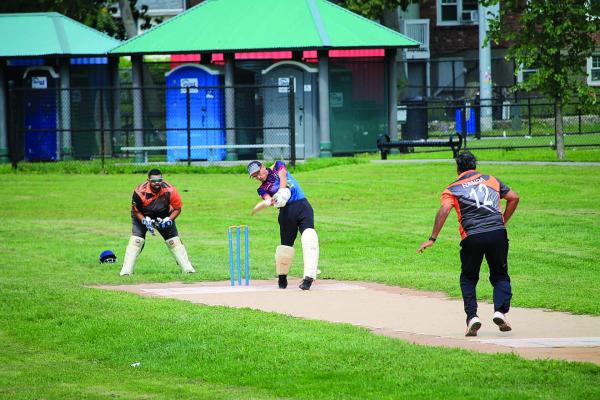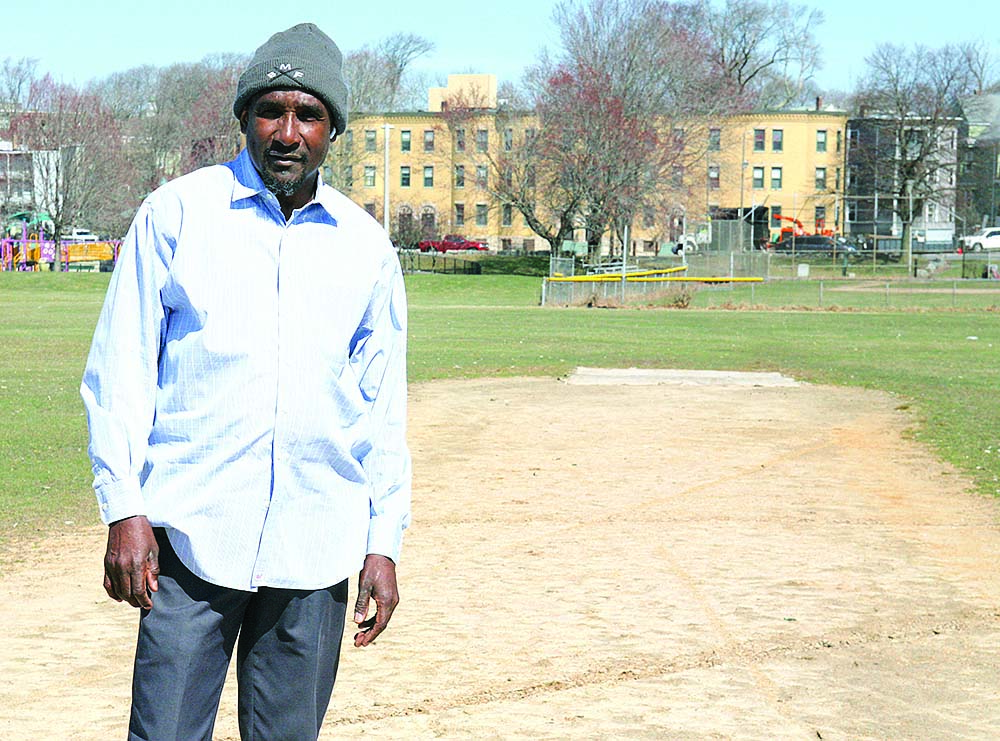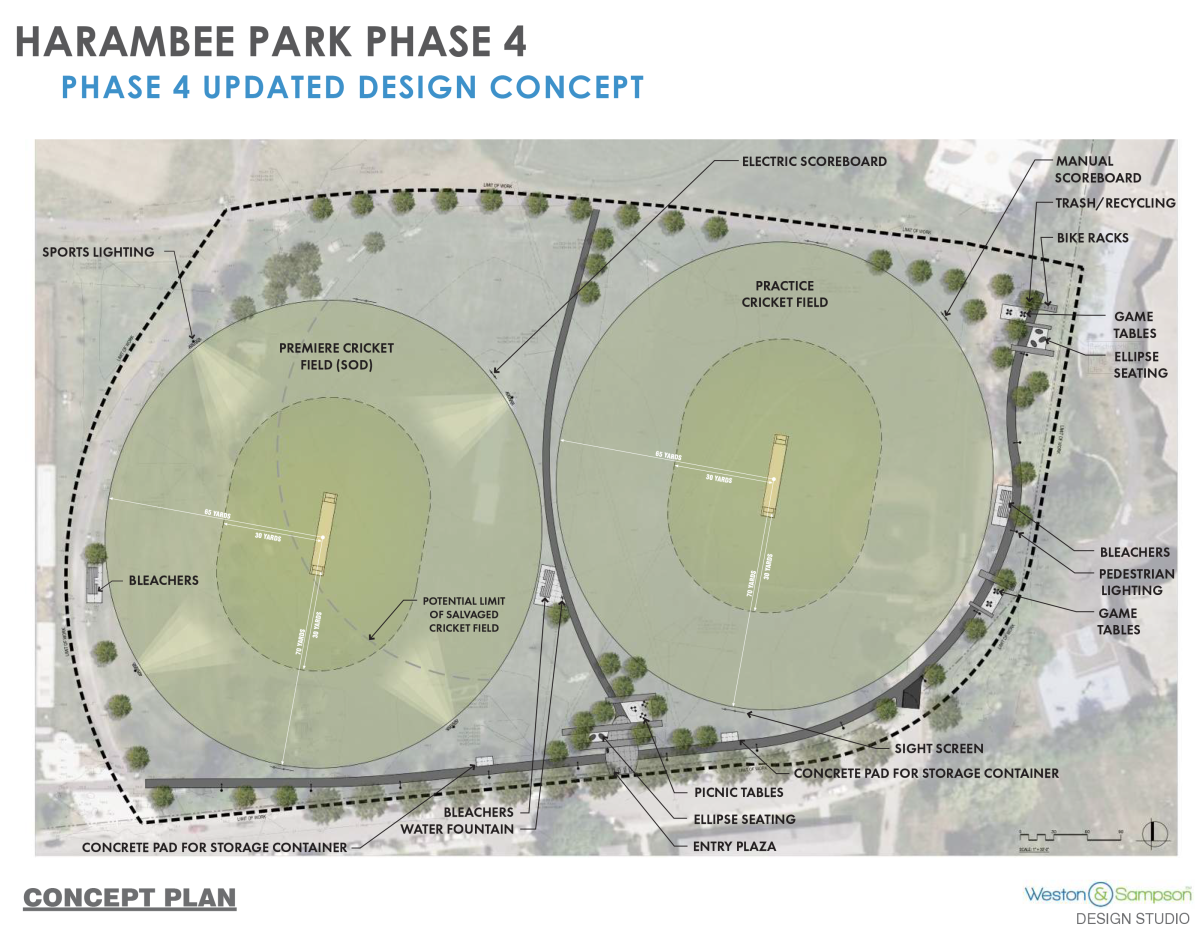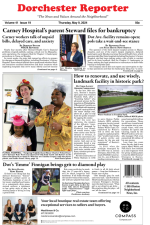April 5, 2023

The East Coast Cricket Club shares Franklin Field with Conway Cricket Club, and said renovations will be good for the sport. They are shown here playing last year at the Franklin Park playstead. (Seth Daniel photos)
With cricket having been played at Franklin Field for more than 100 years as background, a renovation project now underway at Talbot Avenue’s Harambee Park is aimed at making Dorchester home to the premier cricket field in the Northeast.
“We’re trying to make sure this main field is the showpiece,” said Denovan Blake, president of the Conway Cricket Club that uses Franklin Field as its base. “If you go to Los Angeles, Houston, Connecticut, or Ft. Lauderdale, they are building new fields. Even with all that going on, we could have the best field in North America.

Denovan Blake, president of the Conway Cricket Club, hopes renovations are done carefully to the field in Harambee Park.
“We have a mature field already. We’re right here and people drive by and it’s close and there’s a great buzz in the atmosphere during games. It’s Boston – let’s put it that way.”
The Franklin Field venue, even in its current condition, is one of the best in Massachusetts, which is home to 18 fields statewide, according to Ajay Rodrigues, whose East Coast Cricket Club shares Franklin Field with Blake’s team.
“It’s a great field, but that said, in terms of grade or grass it’s not the ideal. The changes they’ve proposed are going to be great for the sport,” he said.
Officials from the Boston Parks and Recreation department said they intentionally made cricket a priority as they mapped out the multi-phased improvement project for the 45-acre park.
Cricket fields are very specific with the outfield turf needing to be more like a golf putting green than a soccer field. The actual pitch, where the ball is “bowled” and the wickets are placed, is best when it’s made of clay – like a clay tennis court. The key is having a surface where the ball bounces correctly.
“Cricket has been here for 100-plus years and we’re well aware of that,” said Cathy Baker-Eclipse, the Parks department’s director of capital projects. “It’s unique. The pitch is a different material than anything else. You can’t put it on the same place as a soccer field or it won’t bounce right…We know the importance of the space and being able to play a regular game.”
The current plan will displace the cricketers from Franklin Field this summer. The season starts in late April and runs through mid-October, so the Conway Club will share space at Almont Park in Mattapan or at Franklin Park’s Playstead. While they are gone, Parks Commissioner Ryan Woods said a $1.7 million improvement project will go forward, with bids going out in May.

The current design to renovate the main cricket field and add a second practice field adjacent to the main field this summer. City officials and cricketers hope to be able to create a premiere facility in New England as the sport booms.
Improvements include adding a second practice field – a replacement for one taken in an earlier phase to make room for youth football – to the east by the Lee School in an underutilized portion of the park There will be new LED sports lighting to replace the current lighting units that are inoperable and antiquated. Beyond that, there will be picnic areas, seating, water fountains, a new entrance, and concrete pads for storage containers.
“These new elements are going to bring about the ability to allow more people to play and become engaged in the sport of cricket,” said Woods. “To have a second pitch and field and lighting for night cricket expands the playing time. That only increases the opportunity for people to participate in the game of cricket and for us to have two premier cricket fields.”
The concern from the cricket community, particularly Blake, is that the plan for the second field requires moving the current main field about 20 feet to the west. The main field, he said, is mature and considered one of the best surfaces in the Northeast. Any discussion of changing it brings worry that conditions could be ruined if movements are not done with precision, he addeds.
“I am concerned about drainage,” Blake said. “You can’t play golf on a soggy green and a cricket field is like a golf green. If it’s soggy, the ball won’t go anywhere. This field needs repairs, but it’s a great field. It can rain very hard and in two hours you can play on it.”
Baker-Eclipse said they have heard those concerns and are looking to preserve the main field as much as possible as they move it 20 feet. The hope is that any inconveniences will be temporary, but they have to fix divots and regrade the existing field.
“Someone had a vision way back when they built this field,” reiterated Blake. “Kudos to them for the vision they had. They did it right. I’m hoping those doing it over now will listen to us and we can have a real showpiece that is greatly improved.”
Both Blake and Rodrigues praised the city for making sure their field is a “cricket-only” field. Blake noted that the Massachusetts Cricket League is considered one of the best in the nation. It started with eight teams and has expanded to more than sixty. With cricket on the rise, dedicated fields are hard to come by.
“I’ve lived in the US for 45 years and played cricket at Franklin Field for 40 of those years,” said Blake. “Cricket is an international sport, and the world is global now and there is an influx of people from the Caribbean, Asia, and former British Commonwealth countries…There’s a big expansion now.”
Concluded Rodrigues, “Franklin Field aside, other fields in the state are being pulled out of use for cricket and this year we’re struggling because 15 or 16 teams don’t have a home…Cricket is always an afterthought. It’s a sad state of affairs…For what it’s worth, I think the Boston Parks Department has been great.”
A final design meeting for the Phase 4 reconstruction of Harambee Park at Franklin Field is scheduled online for April 26 at 6 p.m.


